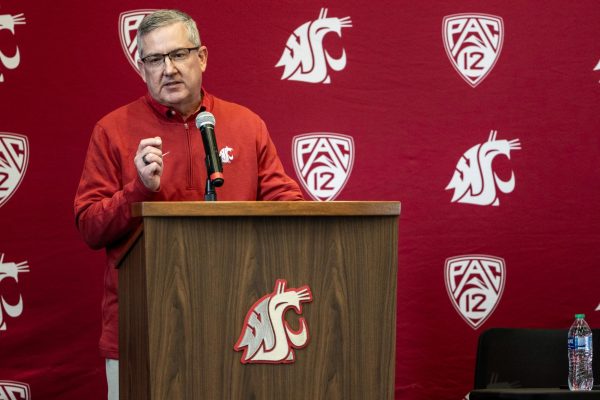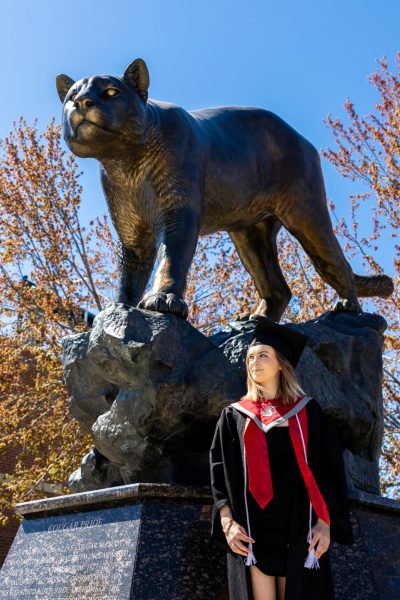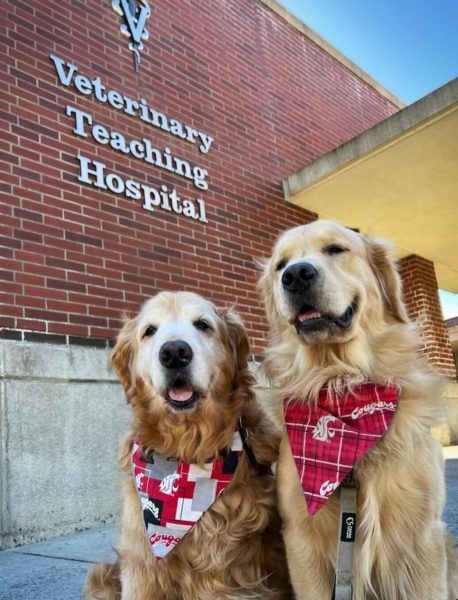Police, scientists, hope to use drones for innovation
Law enforcement aim to employ drones in search, rescue events
March 29, 2018
Three local experts discussed how local governments use drones for science and public safety, as well as issues recreational users should keep in mind when operating on the Palouse on Tuesday.
Tony Bean, executive director of Pullman-Moscow Regional Airport, said when flying drones for recreation, it’s important that people look around where they are going to fly them. He suggested researching the legality of using a drone in the area and checking the distance between the drone and an airport.
“There is an app that you can download from the app store that tells you where you are,” Bean said. “It gives you recommendations on how high you should be flying, and also your proximity to the airport.”
Bean said there are restrictions for drones in certain places, such as near stadiums during football games.
“National parks, nuclear power plants and presidential travel — you are not going to have a drone anywhere around that,” Bean said. “If you are in Washington, D.C., it’s not a straight and shot, because of all of the temporary flight restrictions after 9/11. They can’t get close to anything.”
Pullman Police officer Alex Gordon said they use drones to protect the public and to gather visual information.
“Our mission is to enhance safety and life-saving measures through use of technology,” Gordon said.
At the basic level, he said, drones can give the police a view of something they wouldn’t normally be able to see, or situations they wouldn’t normally put officers in.
“It allows us to stay at a safe location, that’s always a big mission for us,” Gordon said. “Also, with the cameras the drones have, we would be able to collect what happens in the scenario.”
Gordon said drones are low-cost, especially compared to some other robots they have considered in the past.
He said one of the best uses of drones is search-and-rescue operations. Because drones provide an elevated viewpoint, they can help police see in places where they would have difficulty walking or looking around at the ground level.
“Something you deal with in Pullman is that it’s very cold, and so maybe a hunter gets lost in winter or something like that,” Gordon said. “I can’t send a bunch of officers out to walk through the snow or through 10-degree weather. But we can definitely sit in the car, send my drone out to look for people.”
Gordon said drone technology could help in situations like the death of a University of Idaho student, who got lost on his way home from a fraternity party five years ago and froze to death a couple miles from the UI campus.
“We talked about if we could have a program in the future with autonomous drones to search for people and to get medical aid to them,” Gordon said. “It’s something today we can’t do, but maybe in the future that’s how we can help patrol, to be a force multiplier with the use of technology.”
Sindhuja Sankaran, assistant professor of biological systems engineering at WSU, said drones can be useful in helping scientists understand plants and animals.
“The drones can be easily used for imaging to get the temperature profile of the animals in a fast and very quick way,” Sankaran said. “With drones, we get a very high-resolution data.”
She said for many fruit trees, it’s not ideal for them to have too much fruit, because the fruits grow smaller and with lower sugar content.
“And how they make this decision is looking at the plants and say ‘That’s probably too much or too little,’ ” Sankaran said. “It’s all visual, and drones help us look at the different perspectives in coming up [with] those decisions.”
One interesting project she worked on, she said, was a simulated condition for hail damage on crops. She said all the agricultural land in Washington is insured, because hail often falls and seriously damages crops.
Sankaran said if growers do not make a profit, they can go to an insurance company and ask for compensation. Then an insurance agent for hail damage comes and visually assesses their plants and determines the percentage of damage. She said drones are used to get a different view of the amount of damage a field may have sustained.
“We’re making more decisions based on the drone data,” she said.


















